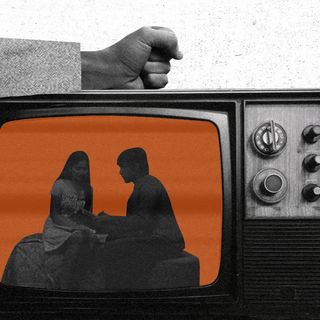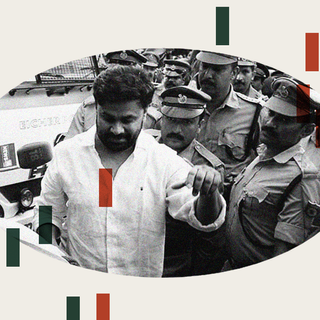
Women Disabled Due to Domestic Abuse Can Now Claim Financial Aid in Madhya Pradesh
However, the amount will be credited directly to the woman’s account only if it is linked to their Aadhaar card.

People who experienced permanent disability due to domestic abuse will be entitled to monetary and infrastructural support, according to a new scheme the Madhya Pradesh government approved on Tuesday.
The financial support will vary depending on the extent of the disability. For women sustaining disability up to 40%, the compensation will be Rs. 2 lakh; for others, the aid will extend beyond Rs. 4 lakh. The injuries and trauma could be at the hands of a partner or the individual’s blood relatives. Other measures include setting more of the “one-stop centers” (which are already part of the Prevention of Women From Domestic Violence Act) where the woman could seek assistance; an easierchannel to file an FIR; presentingthe case to a committee that then decides the compensation.
Titled the “Gharelu Hinsa ki Peedita Ke Liye Sahita Yojna,” the welfare scheme came in response to three gory instances of violence in the state. “It was after these incidents that the Chief Minister had asked for a scheme to be formulated to provide assistance to women who face violence at the hands of their own relatives,” Additional Chief Secretary of Women and Child Development (WCD) department Ashok Shah told The Indian Express. “The central idea was that the government should be able to step in and provide protection to women who cannot even turn to their own family.”
In 2019, Madhya Pradesh registered the highest number of cases of intimate partner violence. It is widely noted the registered cases are severely undercounted — a pattern that remains stark throughout the country. Arguably, for disabled women in abusive relationships — whether marital or parental — the access to support is further restricted. “The imposition of lockdown due to Covid19 has made women more vulnerable to violence but the concerns of 11.8 million women with disabilities remain invisible in the narrative around this issue. This can be immediately attributed to lack of reporting on the specific instances of violence against women with disabilities,” researchers Meghna Sharma and Niharika Das noted in an EPW article.
Human Rights Watch in 2019 listed a range of procedural and infrastructural barriers: physical distance to judicial and police authorities; difficulty in communication; lack of sensitization of police; inaccessible documentation; and complicated judicial process. However, while the current scheme seeks to address the financial agency of women, certain elements may impede access. According to reports, the scheme notes the survivor can access the amount in their bank accounts — but only those accounts that are linked to their Aadhaar card. This is a tricky caveat to add, considering statistically women are less likely to have an Aadhaar card, access to their own documents, or an independent bank account. Even when do they have one, factors such as producing proper documents may transform the linking process into a bureaucratic maze.
Related on The Swaddle:
In other cases, newly-married women found their names off the Aadhaar list, excluding them from accessing other welfare services like food grains. The number of women was estimated to be around one million.
We know financial support is a key factor in separating. It is one of the key reasons women return to abusive relationships, along with other psychological and emotional reasons. The channel to financial aid from the government must then be scrutinized to remove all logistical barriers.
Moreover, the existence of one-stop centers by themselves is not enough. There remains a systemic information gap about their location and availability. “Even if you know and make a call, how do you know what to ask them? What to expect of them? That level of not delivering information even for a woman on the run, right up to systemic apathy, victim-blaming, and shaming language, shows the broader gaps in the larger system,” Kirthi Jayakumar, developer of the Saahas mobile app for survivor advocacy, told The Swaddle last year.
This brings to the fore the necessity of sensitization among people who are set to become the first points of contact for many such women. In 2020, a video of a Madhya Pradesh policeman went viral; he vehemently justified the “beating” of wives. This was not an isolated incident; the lack of empathy and support by centers and police stations remains an obstacle. “The few [government] shelters that exist are not necessarily staffed by people who have the empathy, the training, or even just the verbal capacity to receive a survivor,” Jayakumar added.
Government initiatives may often succumb to being tokenistic or performative. But at the same time, they are useful to set a precedent and cannot be viewed in silos. As of now, the Prevention of Domestic Violence Act, 2005 does not cater to the unique and individualized needs of disabled women; the scope is targeted towards women in general. In other words, Sharma and Das noted that “laws have failed to acknowledge the intersection of gender and disability.”
Domestic Violence Helpline Numbers:
PCVC: 1800 102 7282 (24 hours toll-free helpline)
Aks Foundation: 8793088814 (crisis line); 8793088815 (legal line)
Shakti Shalini: 011-24373737; 9654462722 (call/WhatsApp); 7838957810 (call/WhatsApp)
Saahas survivor support resource: https://www.saahas.space/
Saumya Kalia is an Associate Editor at The Swaddle. Her journalism and writing explore issues of social justice, digital sub-cultures, media ecosystem, literature, and memory as they cut across socio-cultural periods. You can reach her at @Saumya_Kalia.
Related


Holding Actor Dileep Accountable Is Crucial To Ensure Big Stars Are No Longer Immune to #MeToo
